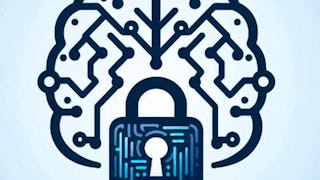AI Security: Risks, Defences and Safety | Defend the Future of Intelligence.
As artificial intelligence becomes embedded in everything from critical infrastructure to everyday applications, a new frontier of cyber risk has emerged. From adversarial attacks to backdoor exploits, AI systems are now prime targets, and powerful tools, in the hands of threat actors. Secure the Systems That Learn AI Security is your essential guide to defending intelligent systems. Developed by Macquarie University’s Cyber Skills Academy, ranked in the top 1% of universities globally and recognised as Australia’s leading cyber security school, this course has been co-designed with global tech leaders to ensure alignment with emerging threats and international standards. Whether you’re a cyber security professional, developer, data scientist, or policy leader, this course equips you to detect, prevent, and respond to the security risks unique to AI. Through deep, applied learning across six core modules, you’ll gain real-world skills to: • Understand AI systems, their architecture, and the security risks that arise from adversarial inputs, model poisoning, and data leakage. • Assess and mitigate AI-driven cyber-physical risks in Operational Technology (OT) and Industrial Control Systems (ICS). • Navigate threats in real-world AI deployments—from deepfakes and misinformation to ethical misuse and privacy violations. • Apply security testing strategies and technical controls, including encryption, red/purple/blue team exercises, and robustness benchmarking. • Align AI systems with frameworks for Responsible AI, covering fairness, transparency, regulatory compliance, and trust. • Look ahead to the evolving risks posed by Artificial General Intelligence (AGI) and deploy proactive defences for the next generation of AI. AI Is the New Attack Surface AI is transforming everything, from how we work to how we’re attacked. This course is built to prepare you for both. You’ll gain the technical fluency, ethical awareness, and strategic insight to secure AI across domains and industries. Lead the defence. Anticipate what’s next. Secure AI now.




 中
中












